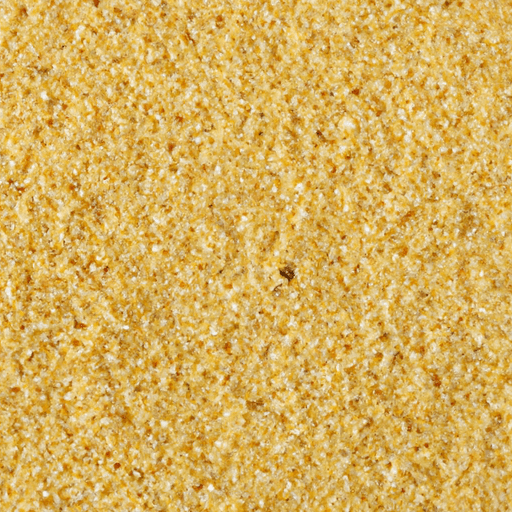Rice Bran: The Nutritious and Versatile Ingredient
When it comes to cooking, we often focus on the main ingredients, but sometimes it’s the supporting players that truly elevate a dish. One such unsung hero of the culinary world is rice bran. Derived from the outer layer of the rice grain, rice bran is packed with flavor, nutrients, and a fascinating history. In this post, we will delve into the world of rice bran and explore its taste, common uses in cooking, nutritional value, and interesting facts.
Taste and Texture
Rice bran boasts a nutty and slightly sweet flavor that adds depth to a wide variety of dishes. It has a delicate and grainy texture, making it a versatile ingredient that can complement both sweet and savory recipes. The taste of rice bran is often described as mild, allowing it to harmonize with other flavors without overpowering them.
Common Uses in Cooking
Rice bran has long been a staple in many cuisines around the world. Its versatility and nutritional profile make it an excellent addition to both traditional and contemporary recipes. So, let’s explore some of the common ways rice bran can be used in cooking:
1. Baking Enhancer
Rice bran can be used as a natural and healthy baking enhancer. Incorporating rice bran into your favorite bread, muffin, or pancake recipes will not only boost the fiber content but also lend a delightful nutty flavor. Simply substitute a portion of flour with rice bran for added nutritional benefits and a unique twist.
2. Nutritious Breakfast Boost
Sprinkle rice bran over your morning cereal, yogurt, or oatmeal to kickstart your day with a nutritional powerhouse. Packed with essential vitamins and minerals, including thiamine, niacin, and magnesium, rice bran will not only add flavor but also provide a delightful crunch.
3. Flavorful Coating
Rice bran makes an excellent coating for meats, fish, or vegetables. Its small particles adhere well to the surface, creating a crispy and delicious exterior when fried or baked. Next time you’re preparing your favorite schnitzel or fried chicken recipe, consider using rice bran for an extra layer of flavor and texture.
4. Savory Rice Dishes
In many Asian cuisines, rice bran is often used as a seasoning in savory rice dishes. Adding a spoonful of rice bran to your fried rice or pilaf will infuse it with a subtle nuttiness and depth of flavor. It’s a simple yet effective way to elevate your rice-based dishes.
Nutritional Value
Apart from its culinary benefits, rice bran boasts an impressive nutritional profile. This whole grain powerhouse is an excellent source of dietary fiber, antioxidants, and essential fatty acids. Here’s a glimpse of what this humble ingredient has to offer:
- Fiber: Rice bran is rich in both soluble and insoluble fiber. It aids digestion, promotes a healthy gut, and helps maintain a feeling of fullness.
- Antioxidants: With high levels of antioxidants, such as vitamin E and gamma-oryzanol, rice bran helps protect the body against harmful free radicals.
- Essential Fatty Acids: Rice bran contains heart-healthy fats, including omega-3 and omega-6 fatty acids, which contribute to overall well-being.
Interesting Facts and History
Aside from its culinary and nutritional aspects, rice bran has an interesting history and some lesser-known facts:
- Ancient Origins: Rice bran has been used in traditional Chinese medicine for centuries to treat various ailments.
- Byproduct: Rice bran is a byproduct of rice milling, the process of removing the outer husks. It was traditionally regarded as waste before its culinary and medicinal benefits were discovered.
- Cosmetic Uses: Due to its high antioxidant content, rice bran oil is also used in skincare products as a natural moisturizer and sunscreen.
Rice bran may be small in size, but its contributions to the culinary world are substantial. From its nutty flavor and versatile uses in cooking to its exceptional nutritional value and intriguing history, rice bran deserves a place in every kitchen. So, why not give this unsung hero a chance to shine and explore the many ways it can elevate your favorite dishes?
Rice Bran
Origin: Rice bran is the outer layer of the rice grain, obtained during the milling process of white rice. It is commonly produced in countries such as China, India, Thailand, Japan, and the United States.
Common Uses: Rice bran has a variety of uses in the culinary world. It is commonly used to produce rice bran oil, which is a healthy cooking oil with a mild flavor. Rice bran can also be added to baked goods, granola bars, cereals, and snacks to enhance their nutritional profile and add a pleasant texture. It is even used as a livestock feed and in the production of industrial goods like biofuels.
Nutritional Benefits: Rice bran is highly nutritious and is a good source of various vitamins, minerals, and antioxidants. It is particularly rich in vitamin E, B vitamins, manganese, and fiber. Rice bran is also a source of gamma-oryzanol, a compound known for its potential cholesterol-lowering effects.
Unique Properties: Rice bran has certain unique properties that make it a valuable ingredient. It contains natural antioxidants, including tocopherols and tocotrienols, which can help protect the body’s cells against damage caused by free radicals. Rice bran also has a relatively high smoke point, which makes it suitable for high-temperature cooking methods such as deep-frying.
Historical Significance: Rice has been cultivated for centuries, and it is thought that rice bran has been used in various cultures since ancient times. Historically, rice bran was often a byproduct of rice milling and was considered waste. However, as awareness of its nutritional benefits has grown, its use has expanded in both cooking and other industries.
Please note that while rice bran is generally safe for consumption, some individuals may have allergies or intolerances to rice or rice-derived products.




Use the share button below if you liked it.
It makes me smile, when I see it.